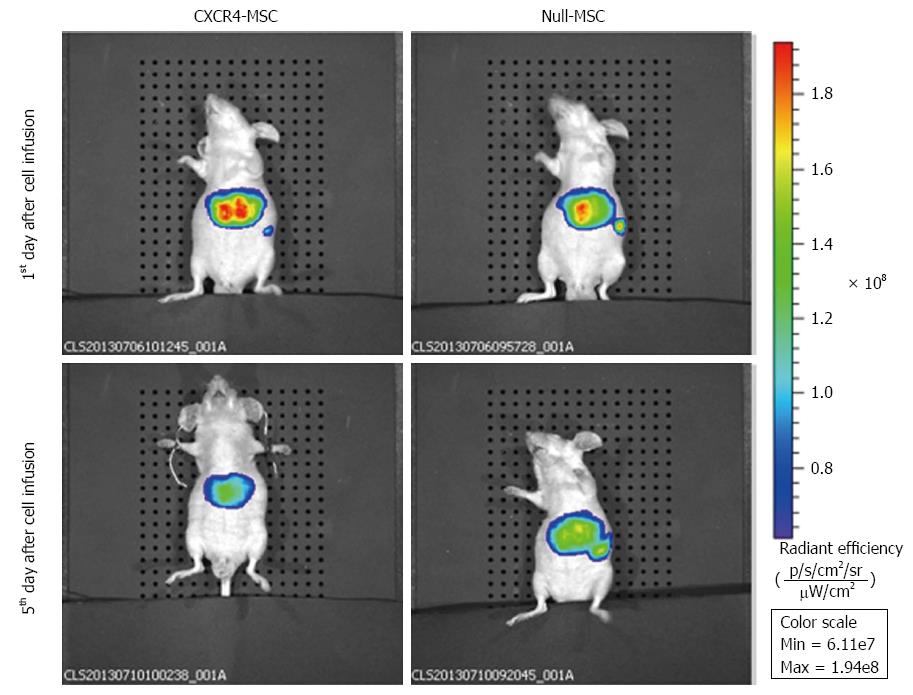Copyright
©2014 Baishideng Publishing Group Inc.
World J Gastroenterol. Oct 28, 2014; 20(40): 14884-14894
Published online Oct 28, 2014. doi: 10.3748/wjg.v20.i40.14884
Published online Oct 28, 2014. doi: 10.3748/wjg.v20.i40.14884
Figure 5 In vivo fluorescence images of nude mice at 1 and 5 d after injecting DiR-labeled mesenchymal stem cells via the tail vein.
At 1 d after transplantation in the chemokine CXC receptor 4 (CXCR4) group, a strong fluorescence signal was detected in the liver, whereas the fluorescence intensity was low in the spleen. In the Null group, the liver and spleen both exhibited a strong fluorescence signal and the intensity was almost the same. At 5 d following transplantation, the fluorescence signal in the spleen of the CXCR4 group could not be detected, and in the Null group, although the fluorescence intensity decreased compared with 1 d after transplantation, the liver and spleen showed nearly the same signal intensity. MSC: Mesenchymal stem cells.
- Citation: Ma HC, Shi XL, Ren HZ, Yuan XW, Ding YT. Targeted migration of mesenchymal stem cells modified with CXCR4 to acute failing liver improves liver regeneration. World J Gastroenterol 2014; 20(40): 14884-14894
- URL: https://www.wjgnet.com/1007-9327/full/v20/i40/14884.htm
- DOI: https://dx.doi.org/10.3748/wjg.v20.i40.14884









